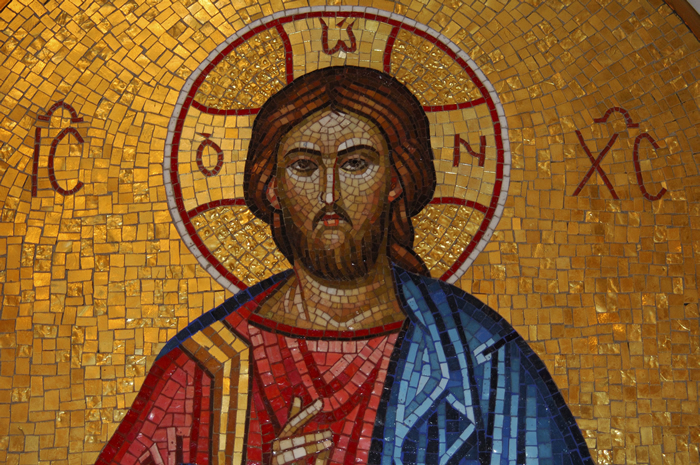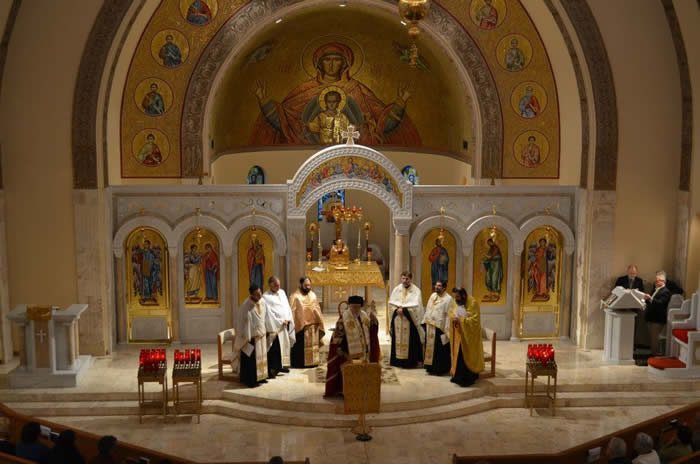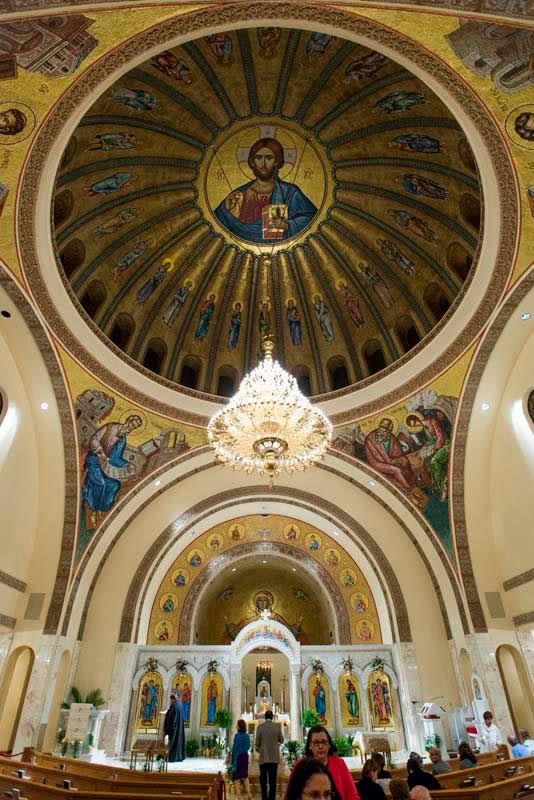Our Worship
When a person looks at the development of Christianity, three major groups can be discerned: the Eastern Orthodox, the western or Roman Catholic and the Protestant. All worship Jesus Christ as the Messiah, the Savior, born of a virgin, fully God and fully Man, resurrected from the dead, who now sits at the right hand of the Father in Heaven and who will return in glory to judge the living and the dead.
 What makes Eastern Orthodox Christianity different is the way we worship our Savior and Lord. Two scriptures characterize the essence of Orthodox worship today. The first is Matthew 5:17 where Jesus said “Do not think that I came to destroy the Law or the Prophets. I did not come to destroy but to fulfill.” The second scripture is 2 Thessalonians 2:15 where St Paul said “Therefore, brethren, stand fast and hold the traditions which you were taught, whether by word (of mouth) or our epistle (or letter).”
What makes Eastern Orthodox Christianity different is the way we worship our Savior and Lord. Two scriptures characterize the essence of Orthodox worship today. The first is Matthew 5:17 where Jesus said “Do not think that I came to destroy the Law or the Prophets. I did not come to destroy but to fulfill.” The second scripture is 2 Thessalonians 2:15 where St Paul said “Therefore, brethren, stand fast and hold the traditions which you were taught, whether by word (of mouth) or our epistle (or letter).”
The Eastern Orthodox Christian faith is built upon the two-fold foundation of Holy Tradition and Holy Scriptures. Remember, the first century Christians did not have the canon of the New Testament scriptures (i.e., Matthew, Mark, Luke John…through Paul, John and Revelation). They had their form of Temple worship, the Law of Moses, the teachings of the Apostles, and the spoken traditions of their elders.
 In a sentence, Easter Orthodox worship embodies the teachings of Christ seen in the scriptures, maintains the traditions passed on by His Apostles, and upholds the continuity of form dictated by God in the Old Testament. Thus, the use of ornate vestments by the clergy, candles, incense, and images tie us directly and unmistakably to the Old Testament Temple where God resided in the Ark within the Holy of Holies. The worship of Jesus Christ the Son of God ties us to the fulfillment of the final covenant between God and Man. The celebration and reception by the Orthodox faithful of the Body and Blood of Christ during each Divine Liturgy not only provides a personal encounter with our living Lord but also gives us the opportunity to directly receive the gift of God’s grace. The practice of our form of worship prepares each communicant for the actual and imminent return of our Lord.
In a sentence, Easter Orthodox worship embodies the teachings of Christ seen in the scriptures, maintains the traditions passed on by His Apostles, and upholds the continuity of form dictated by God in the Old Testament. Thus, the use of ornate vestments by the clergy, candles, incense, and images tie us directly and unmistakably to the Old Testament Temple where God resided in the Ark within the Holy of Holies. The worship of Jesus Christ the Son of God ties us to the fulfillment of the final covenant between God and Man. The celebration and reception by the Orthodox faithful of the Body and Blood of Christ during each Divine Liturgy not only provides a personal encounter with our living Lord but also gives us the opportunity to directly receive the gift of God’s grace. The practice of our form of worship prepares each communicant for the actual and imminent return of our Lord.
The fullness and richness of Orthodox worship transcends language, culture, and time, even though they are directly connected to the people by these very items.As one Church historian said, “You cannot appreciate the present or can you fulfill the future if you are disconnected from the past”. The Eastern Orthodox faith maintains an unbroken link to the church of Jesus’ time. It actively experiences the teachings, traditions, and practices of the Apostles and early church Fathers. It “holds to the traditions” led and directed by the Holy Spirit of God. It fulfills the scriptures and does not separate them from the historical and ecclesiastical settings in which they were written.
The Divine Liturgy of St. John Chrysostom was written in the latter half of the Fourth Century. It is one of many services performed in the cycle of worship by the Eastern Orthodox faith. Considering that the early Christian church was the only Christian church (unlike numerous different Christian denominations today), this was the primary Sunday morning service, of that time and for centuries to come, for Christians everywhere.
Sunday morning worship in the Eastern Orthodox Church depicts the entire life of Christ including the fulfillment of the promise of his coming (the Orthros service), His nativity (the service of the Preparation or Proskomide), as well as his ministry, crucifixion, death and resurrection.
In the course of the liturgy, the Orthodox faithful pray for all the world, our rulers, those who travel, the sick, the captives, and “all our brethren in Christ”. They hear the scriptures, offer their gifts to God, bow at His presence and enjoy the reunion with Him through receiving Holy Communion.
 Each Divine Liturgy is a journey by which the people are “caught up in the clouds to meet the Lord in the air” (1 Thessalonians 4:17). We are then sent forth from this place of reunion with God into the world to carry the light of Christ into the darkness. As one takes time to examine it’s contents beyond the words and hymns, the Diving Liturgy becomes a guide book for each of us on this journey from Earth to Heaven and back. May God be our Guide as we worship Him in love and in truth.
Each Divine Liturgy is a journey by which the people are “caught up in the clouds to meet the Lord in the air” (1 Thessalonians 4:17). We are then sent forth from this place of reunion with God into the world to carry the light of Christ into the darkness. As one takes time to examine it’s contents beyond the words and hymns, the Diving Liturgy becomes a guide book for each of us on this journey from Earth to Heaven and back. May God be our Guide as we worship Him in love and in truth.
– Rev. Frank Milanese
